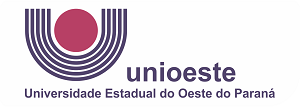RESILIENCE OF THE DAIRY CATTLE HERD STRUCTURE TO LIGHTNING ACCIDENTS
DOI:
https://doi.org/10.48075/ijerrs.v4i3.30126Abstract
Climate change is producing an increase in the frequency of lightning strikes and the risk of accidents with animals in rural areas. The animals’ death by fulmination causes herd’s structure destabilization, generating handling inefficiencies and economic losses. Avoiding the exposure of animals to lightning accidents is an action to build climate resilience of dairy cattle that improves the ethical standard of livestock. The operationalization of resilience as an attribute of the dairy cattle production system generates information that guides the adoption of sustainable technology and the management of herds affected by disturbances caused by lightning disturbances. The System Dynamics methodology was used to simulate scenarios quantifying the resilience of the herd structure to lightning disturbances. In the mild scenario with lightning disturbance of magnitude equal to 0.10, 10 lactating cows died, out of a total of 186.25 animal units (AU) and ten cows, four calves and five heifers were no longer discarded with a delay of two years to stabilize the herd’s structure. In the severe scenario, a lightning disturbance with a magnitude of 0.17, which resulted in the death of 17 lactating cows, there was a loss of 11.75 AU. For a disturbance with magnitude equal to or above 0.18, the system did not recover the stability of the structure of the initial herd before the lightning accident. Losing resilience in this magnitude is worrying considering the possibility of dairy cattle fulmination in the order of up to 50%, magnitude of 0.50, of the animals on the farm in a single event. The in silico experiments with simulation of the Herd model generated scenarios with counterintuitive behaviors of the herd structure resilience, which promote learning and are useful for the management of pasture-based dairy cattle system.
Downloads
Published
How to Cite
Issue
Section
License
Copyright (c) 2022 International Journal of Environmental Resilience Research and Science

This work is licensed under a Creative Commons Attribution-NonCommercial-ShareAlike 4.0 International License.
Aviso de Direito Autoral Creative Commons
Política para Periódicos de Acesso Livre
Autores que publicam nesta revista concordam com os seguintes termos:
1. Autores mantém os direitos autorais e concedem à revista o direito de primeira publicação, com o trabalho simultaneamente licenciado sob a Licença Creative Commons Attribution que permite o compartilhamento do trabalho com reconhecimento da autoria e publicação inicial nesta revista.2. Autores têm autorização para assumir contratos adicionais separadamente, para distribuição não-exclusiva da versão do trabalho publicada nesta revista (ex.: publicar em repositório institucional ou como capítulo de livro), com reconhecimento de autoria e publicação inicial nesta revista.
3. Autores têm permissão e são estimulados a publicar e distribuir seu trabalho online (ex.: em repositórios institucionais ou na sua página pessoal) a qualquer ponto antes ou durante o processo editorial, já que isso pode gerar alterações produtivas, bem como aumentar o impacto e a citação do trabalho publicado (Veja O Efeito do Acesso Livre).
Licença Creative Commons
Esta obra está licenciada com uma Licença Creative Commons Atribuição-NãoComercial-CompartilhaIgual 4.0 Internacional, o que permite compartilhar, copiar, distribuir, exibir, reproduzir, a totalidade ou partes desde que não tenha objetivo comercial e sejam citados os autores e a fonte.









